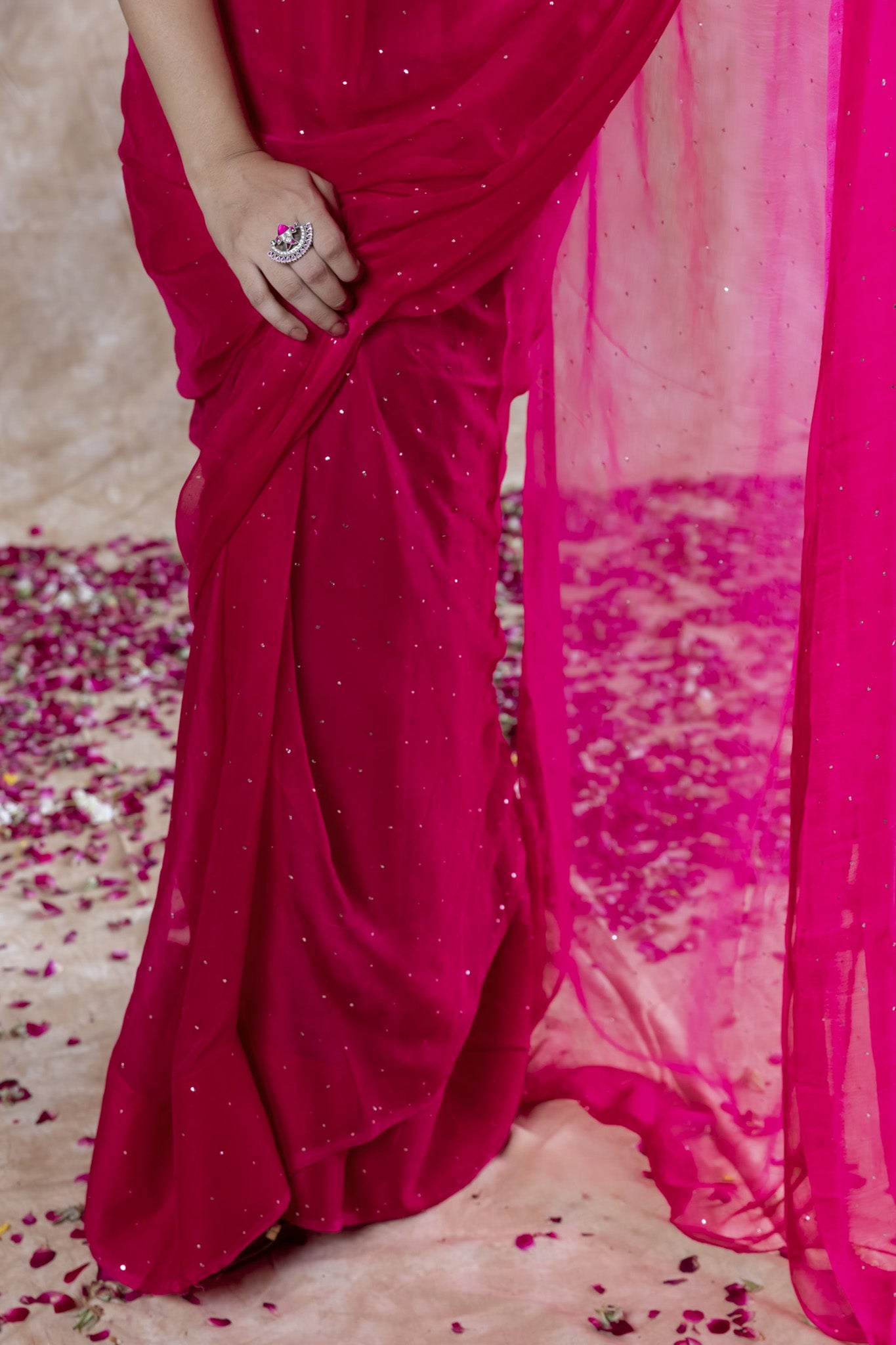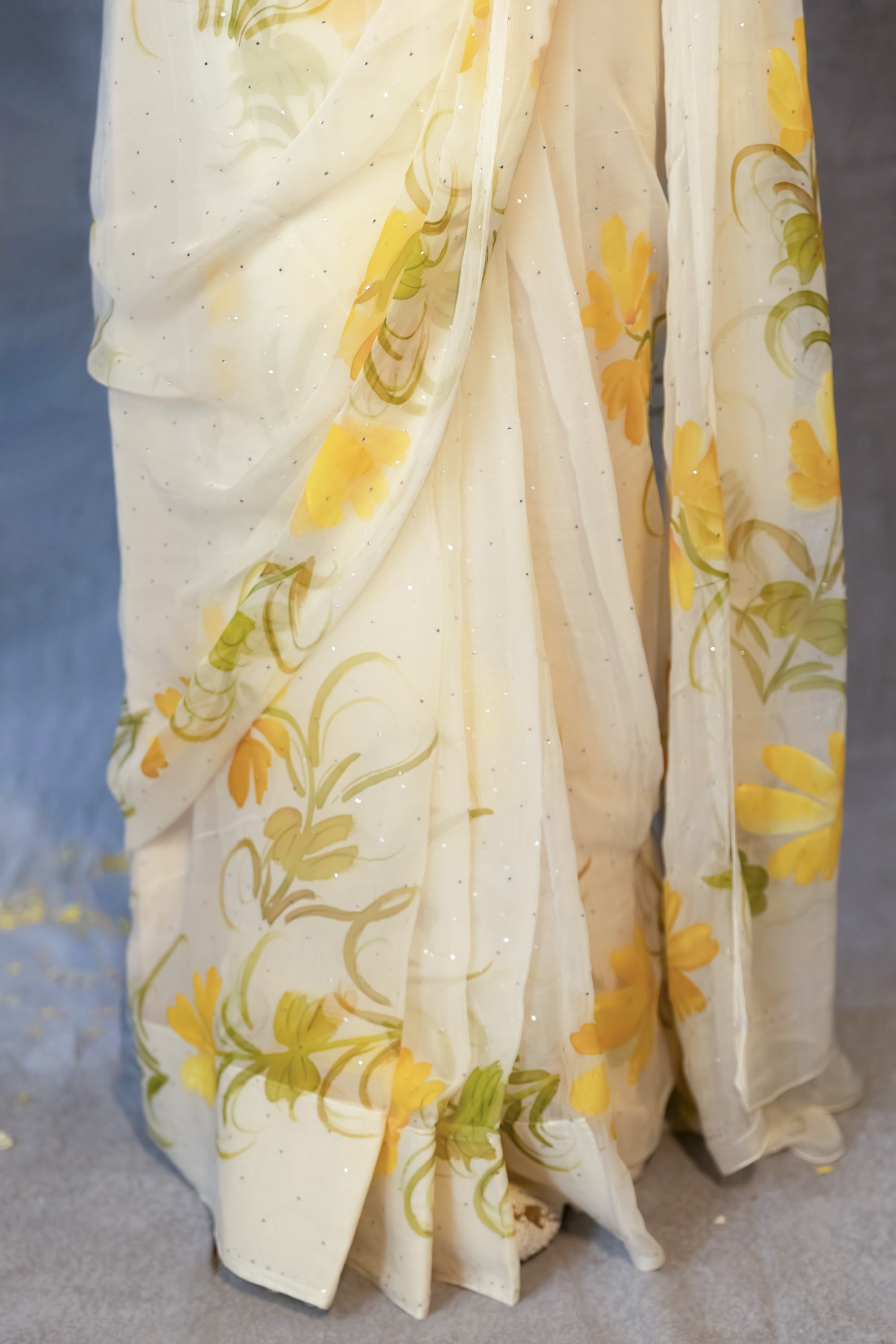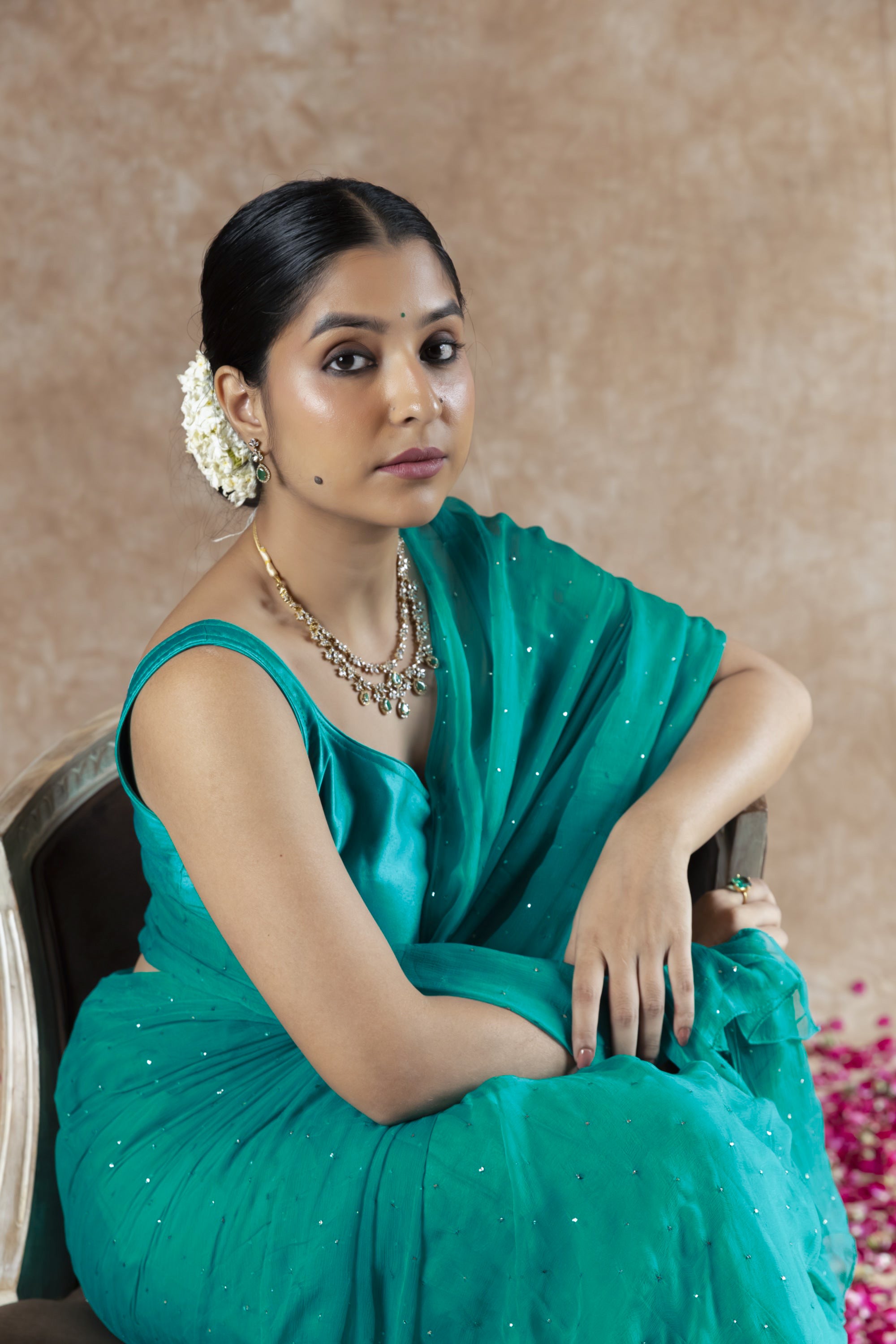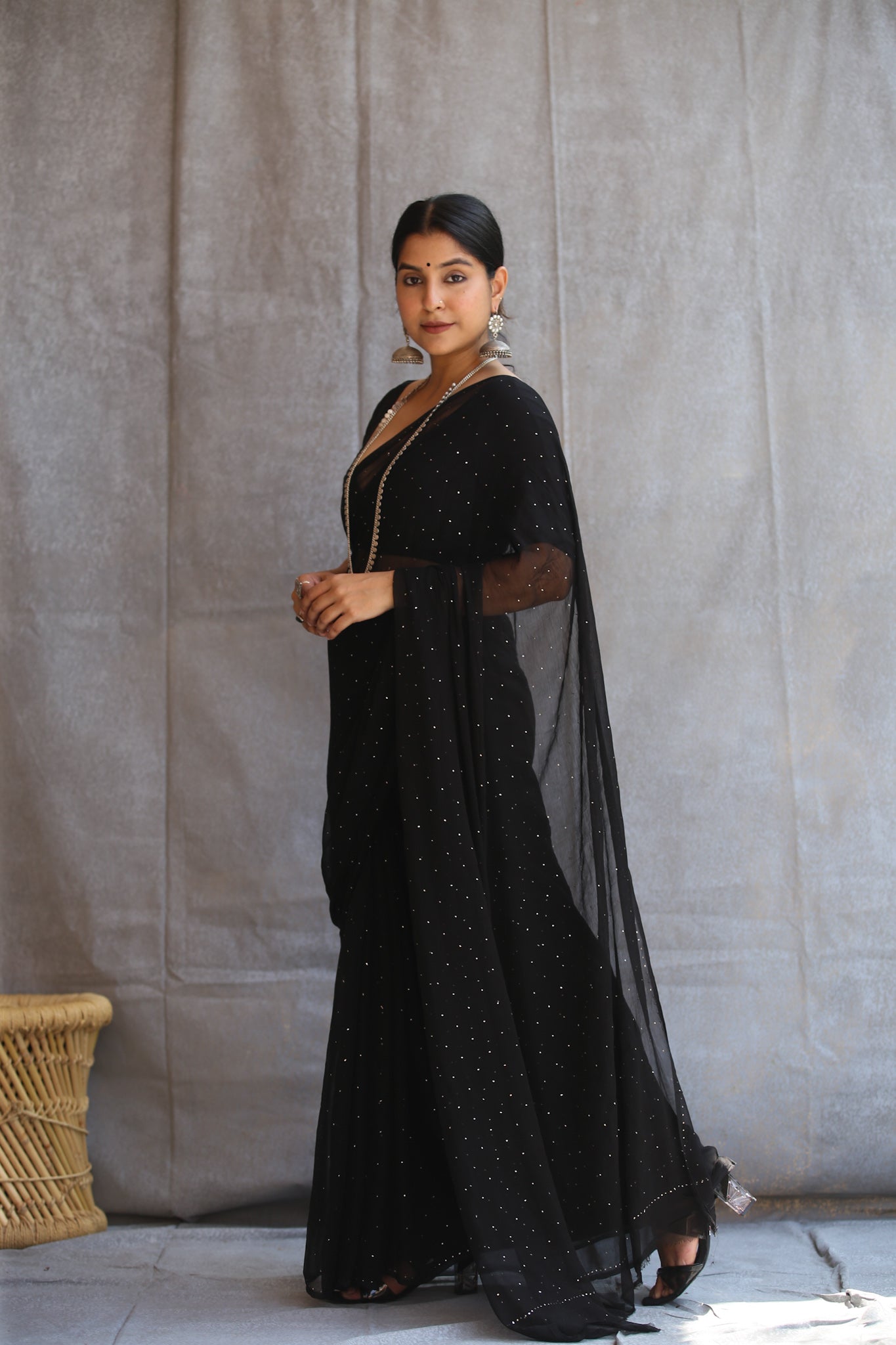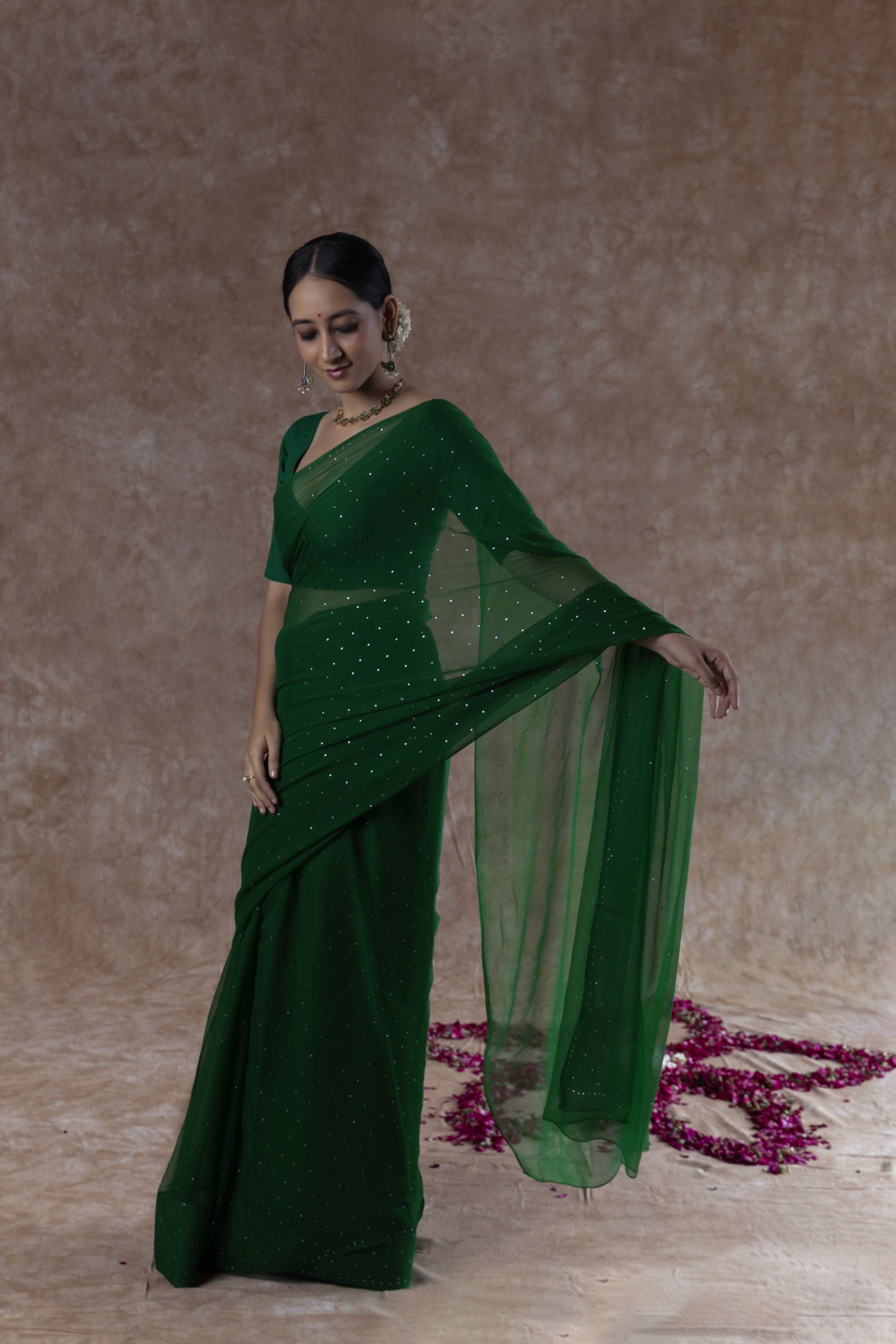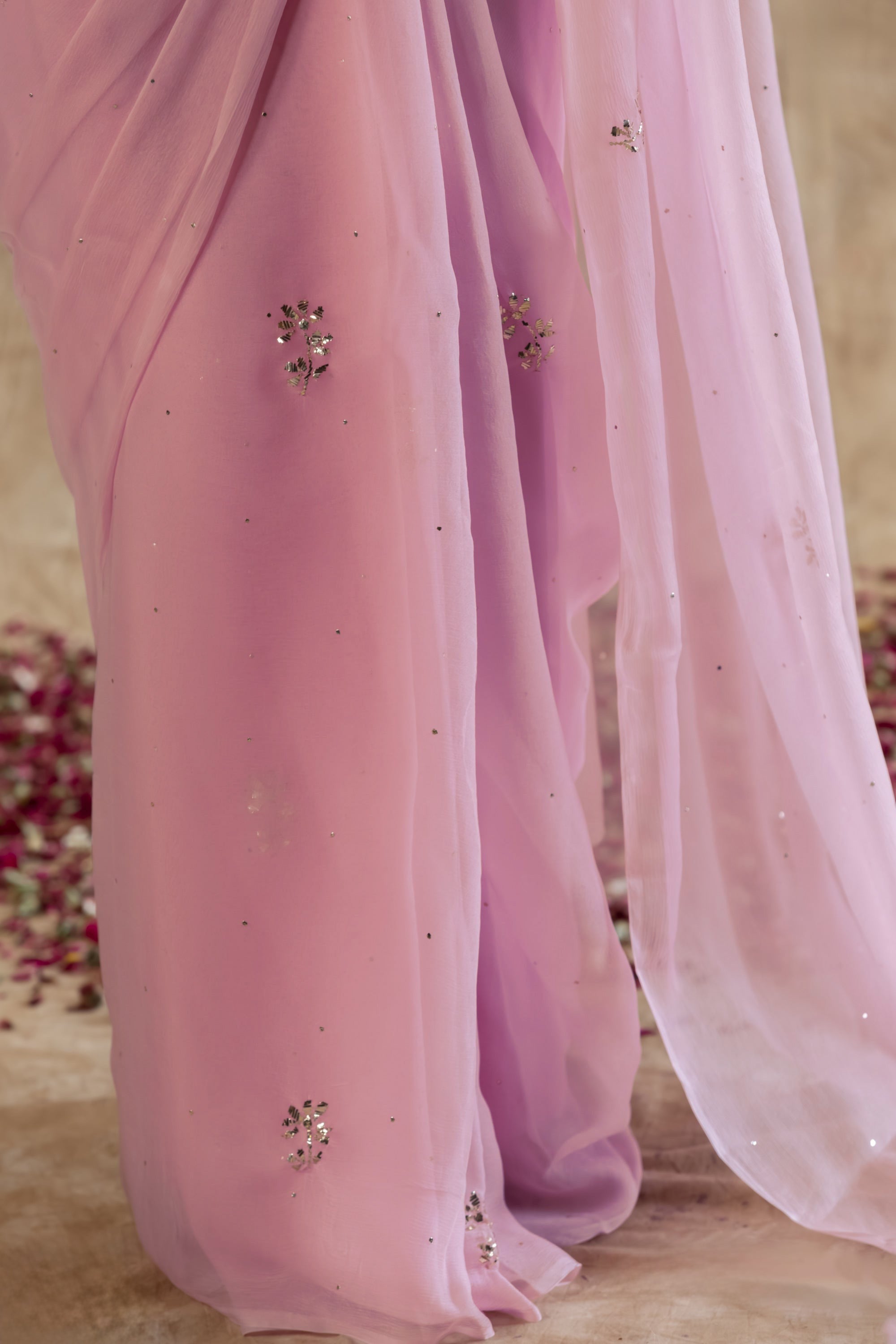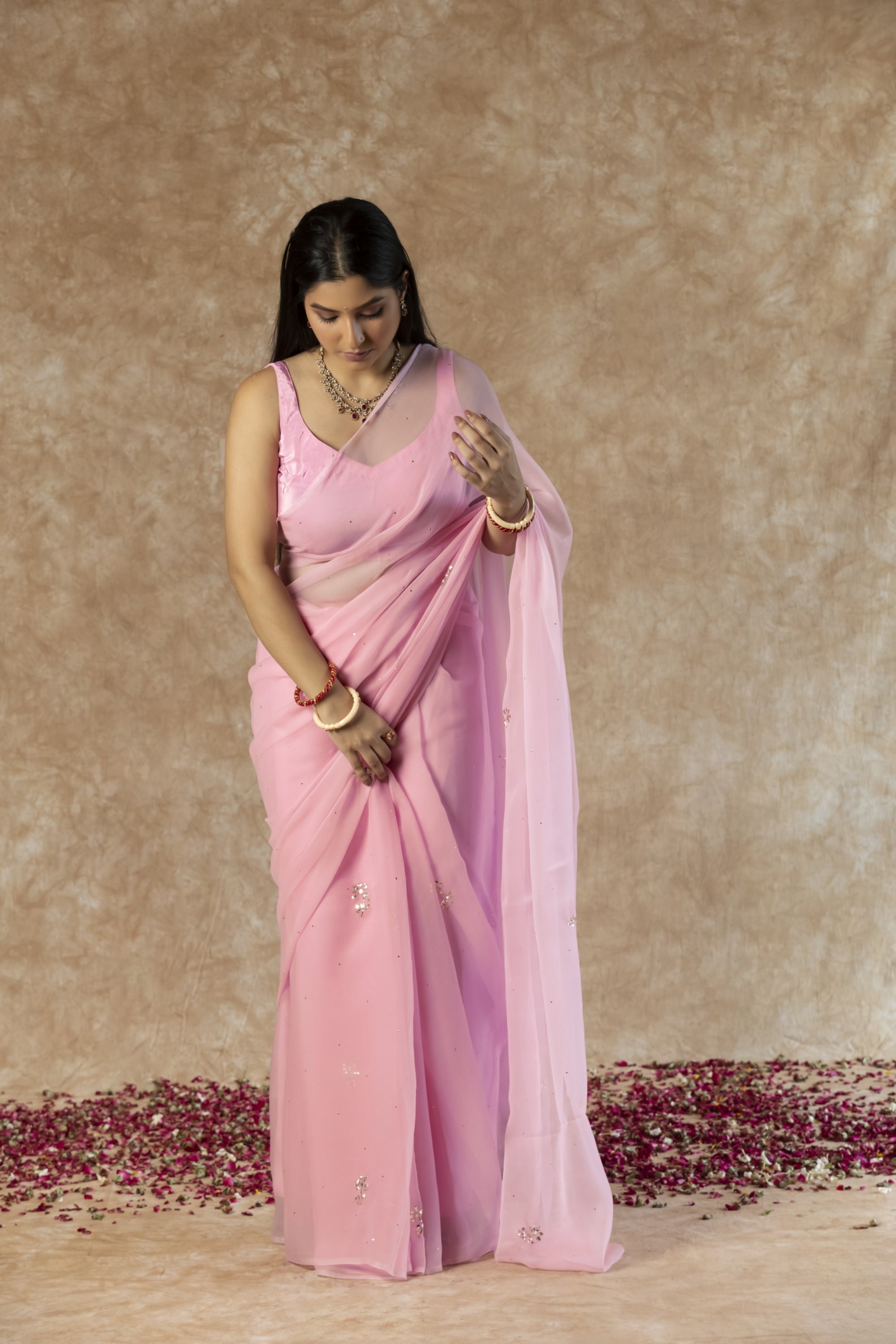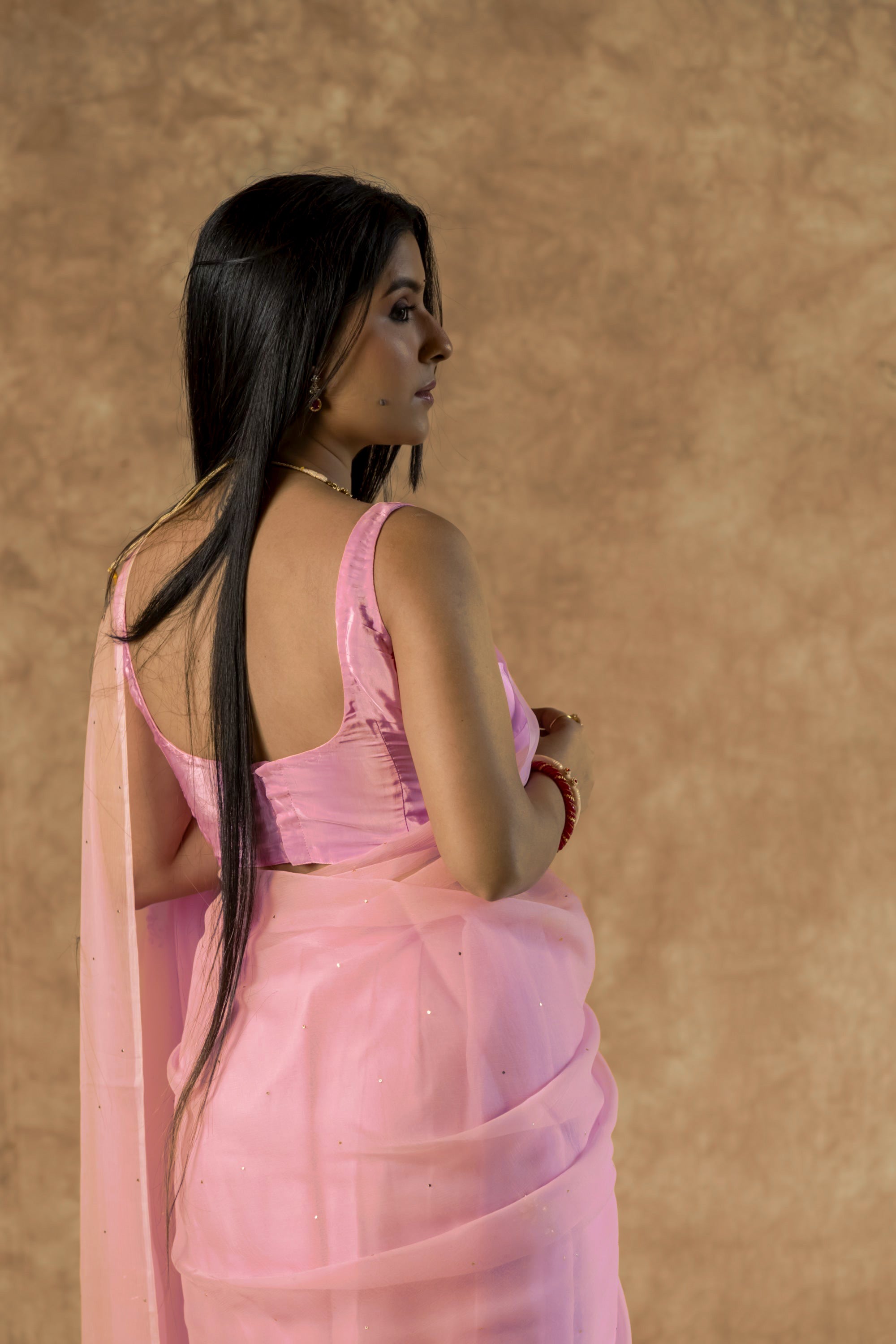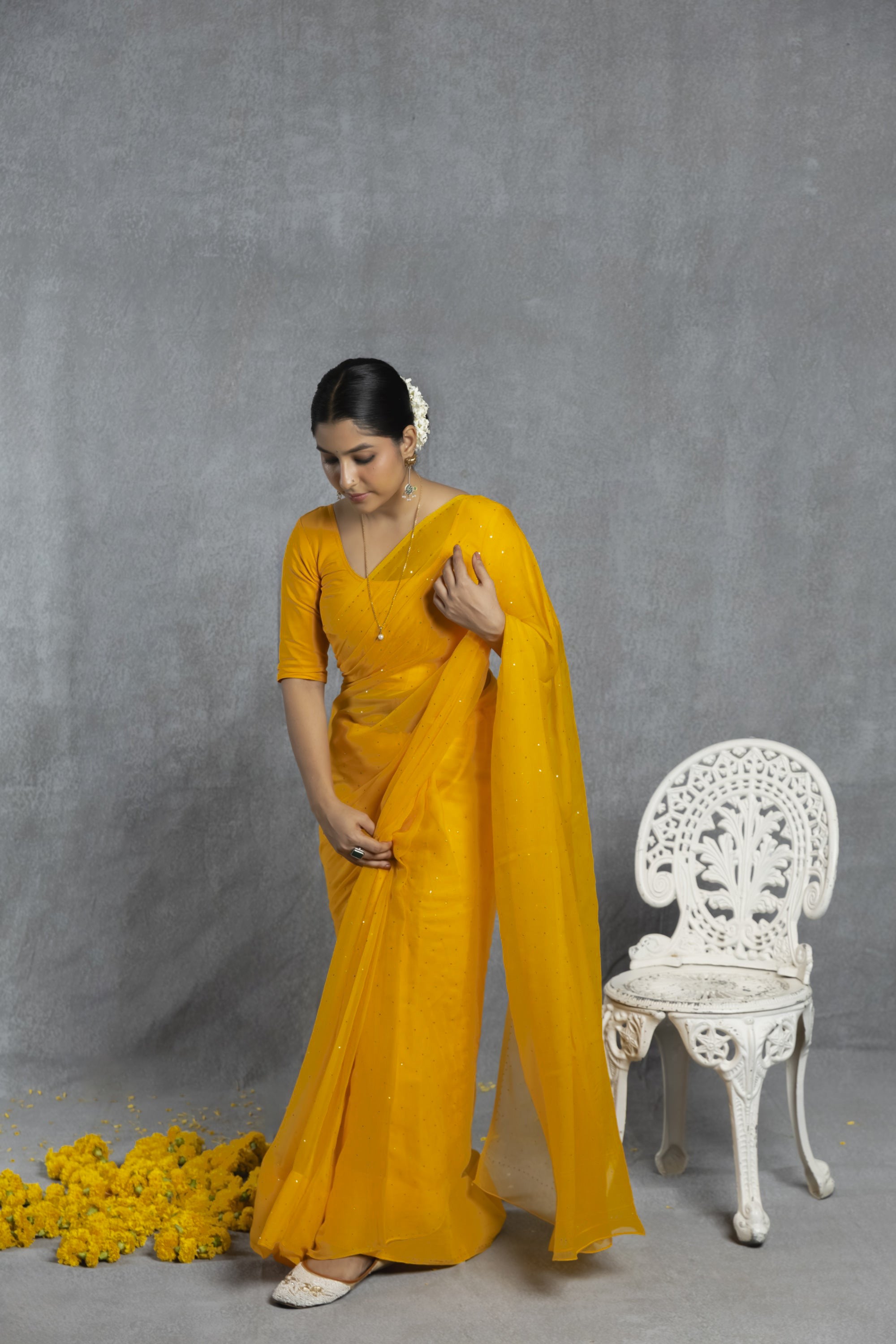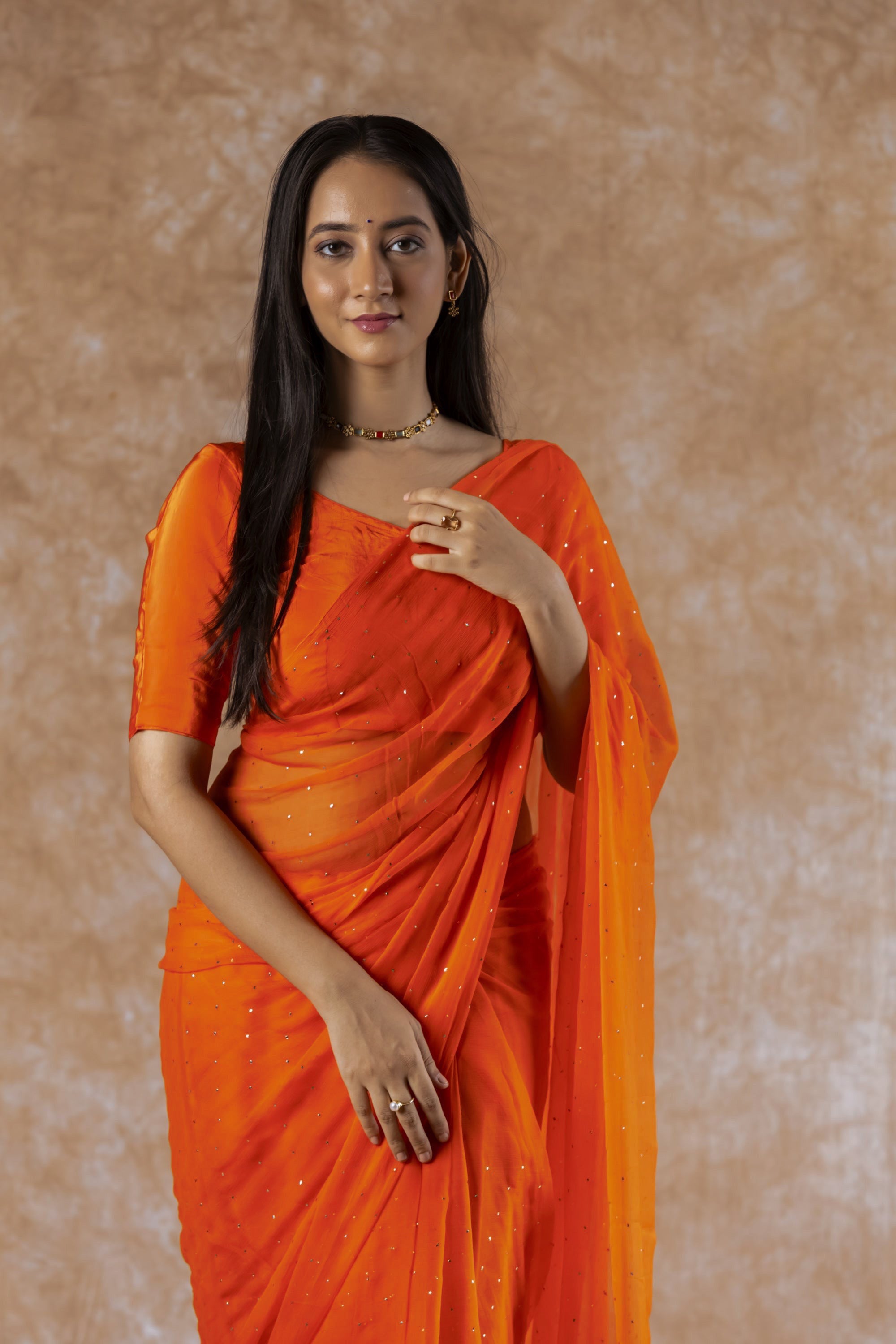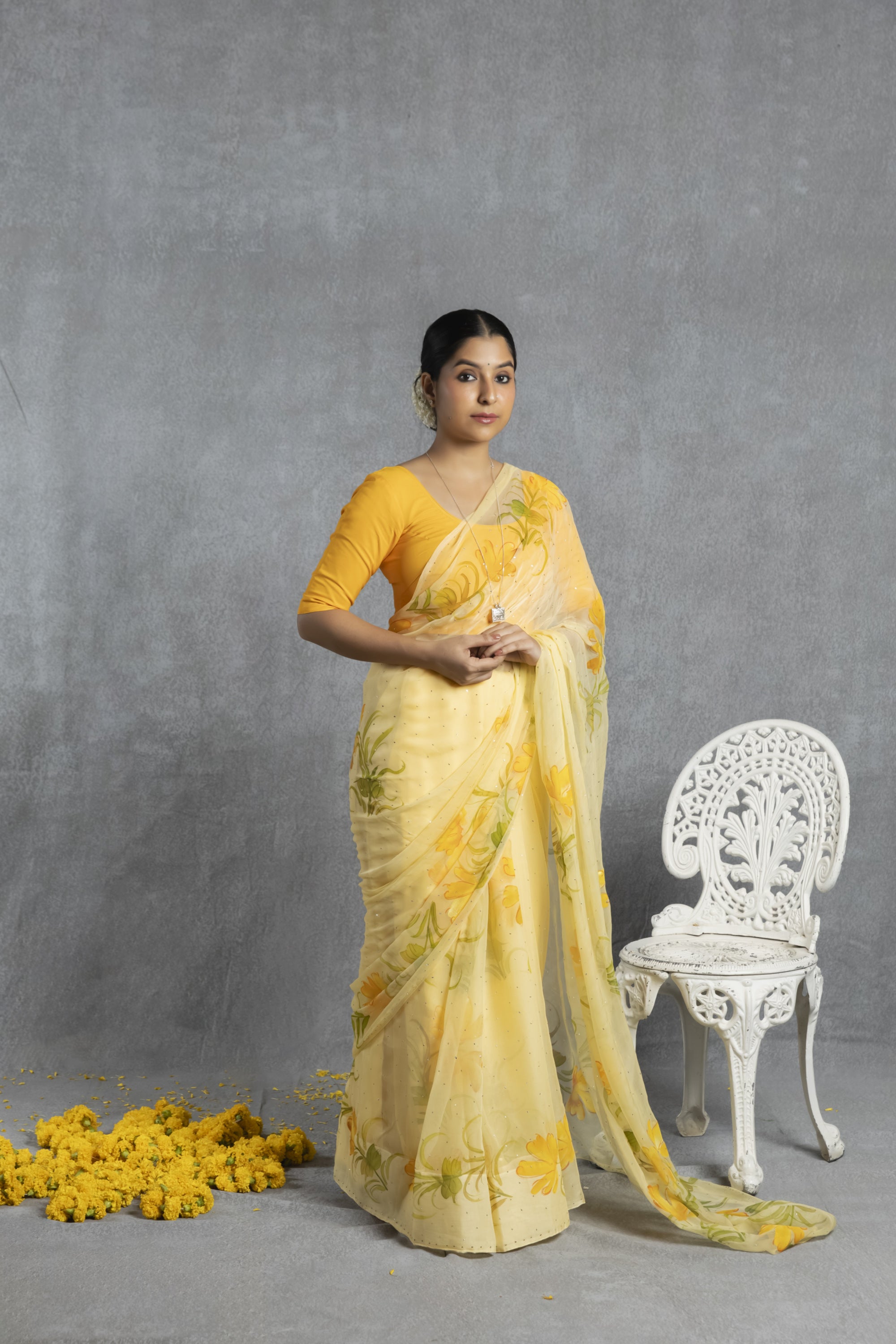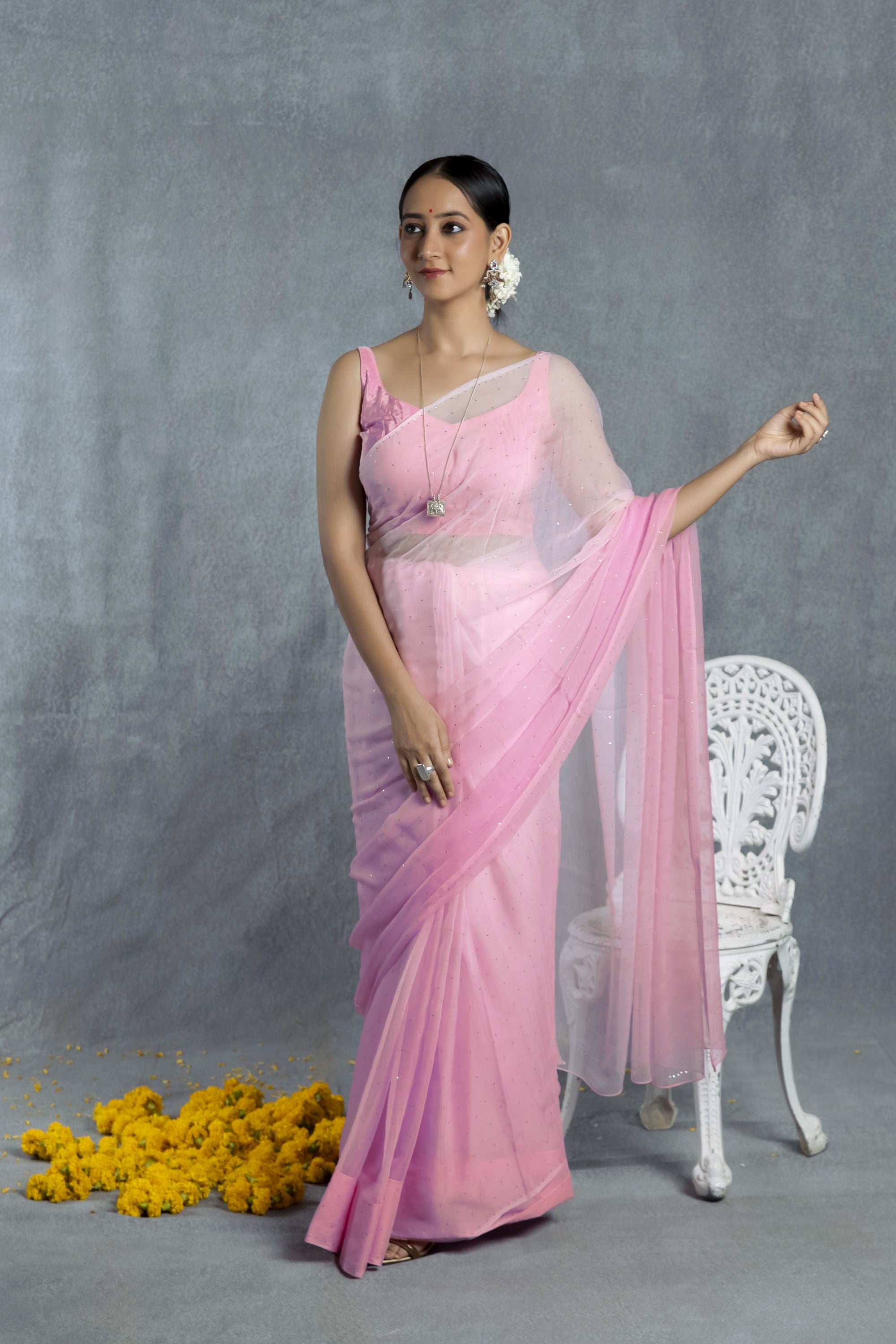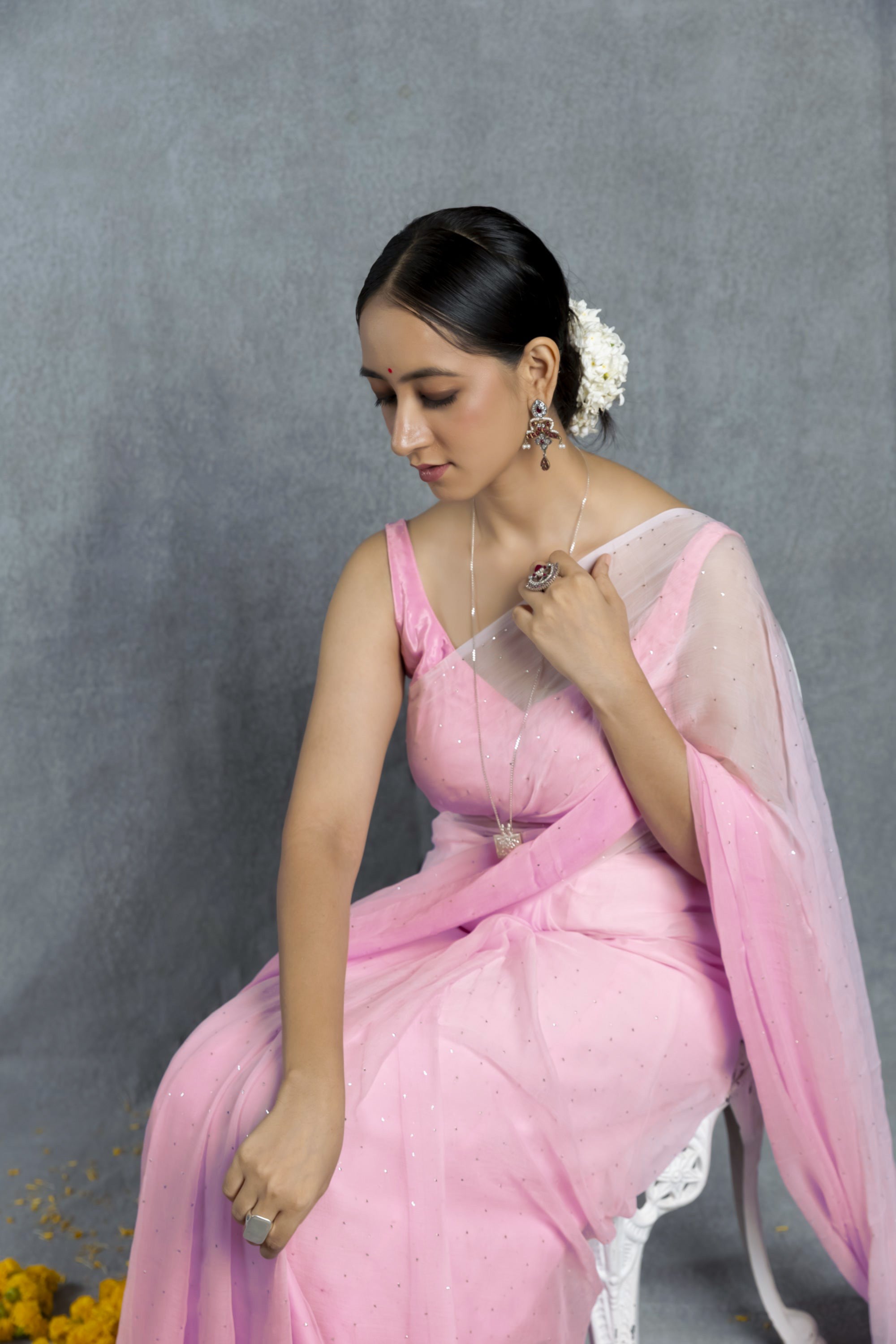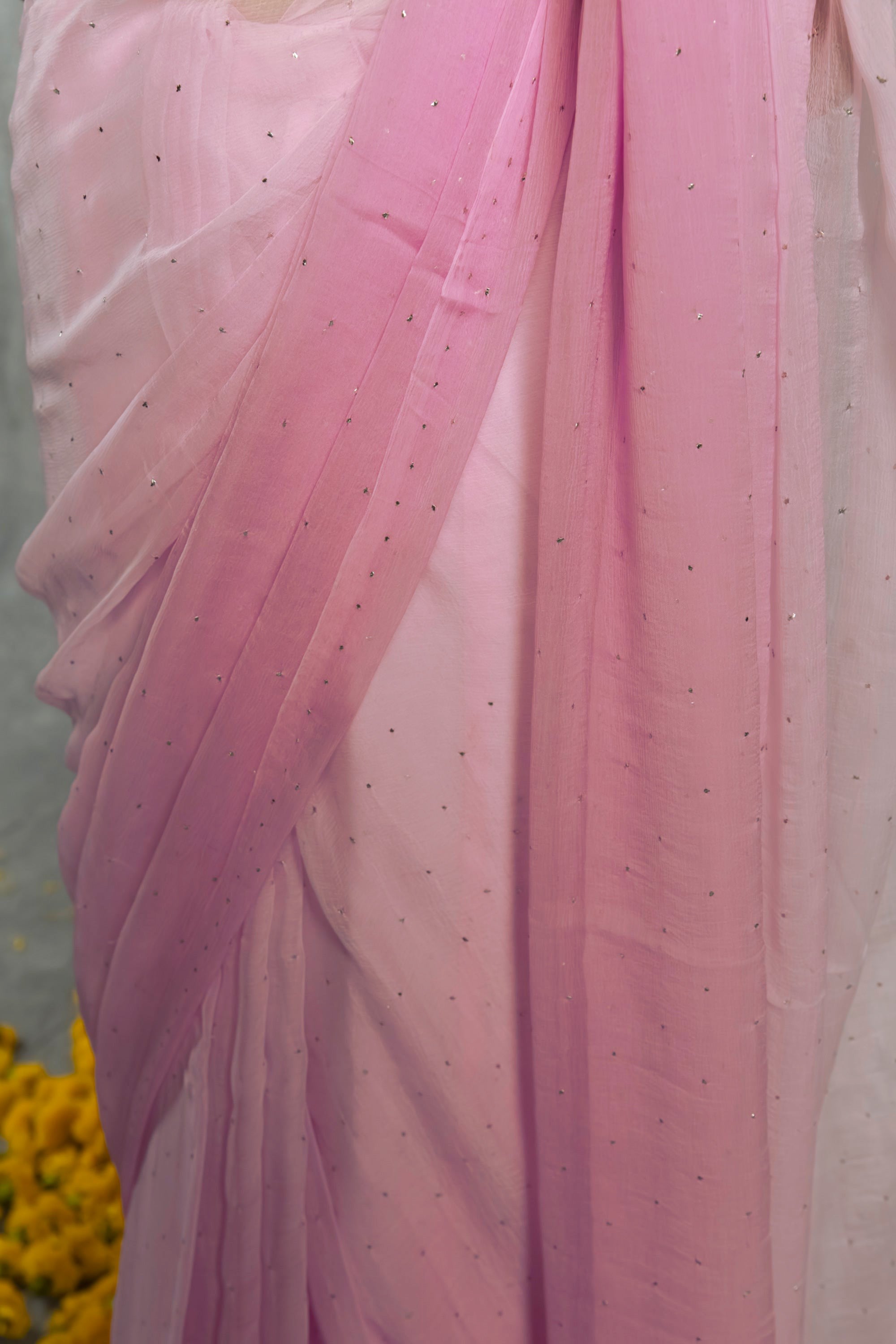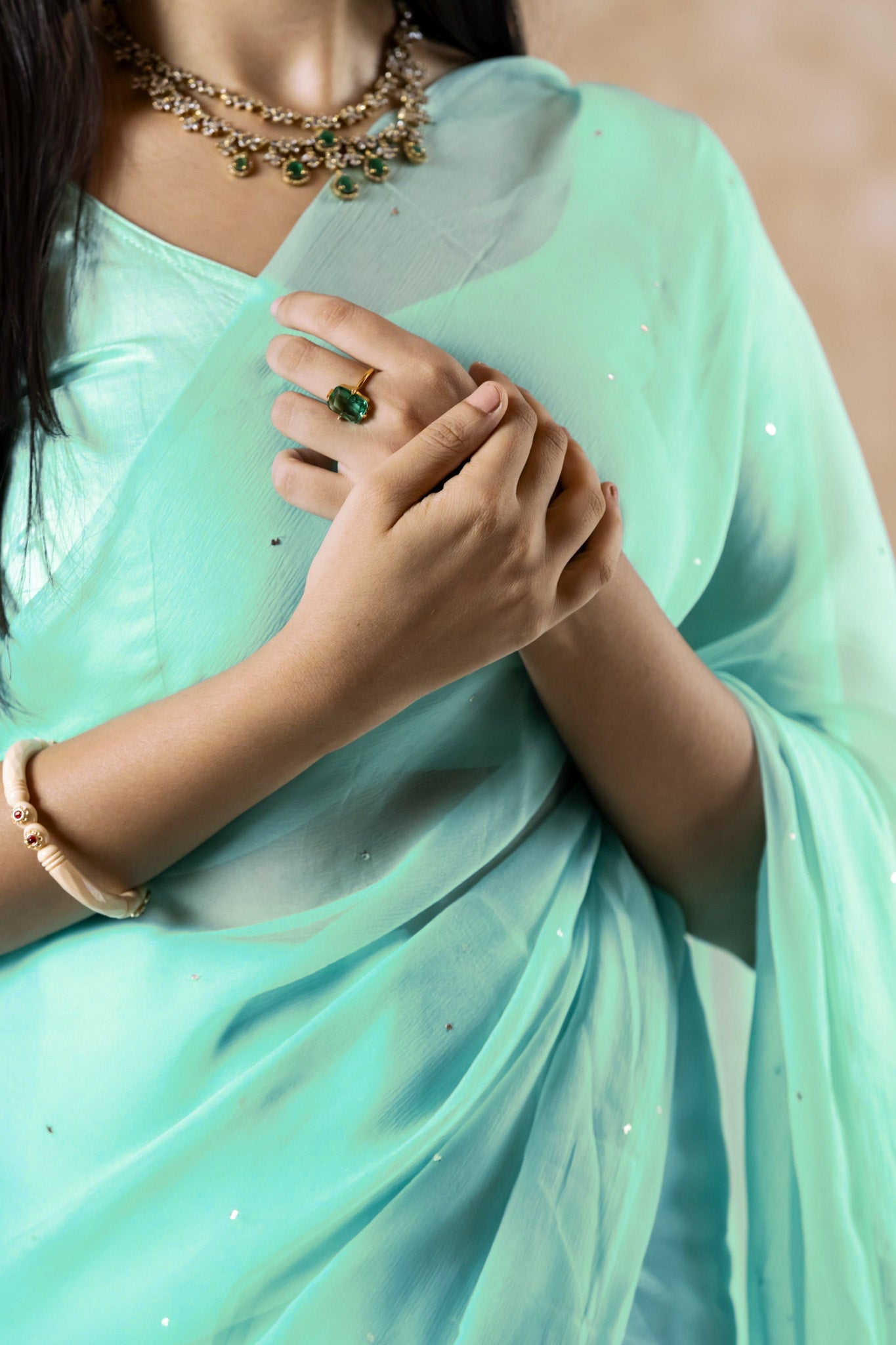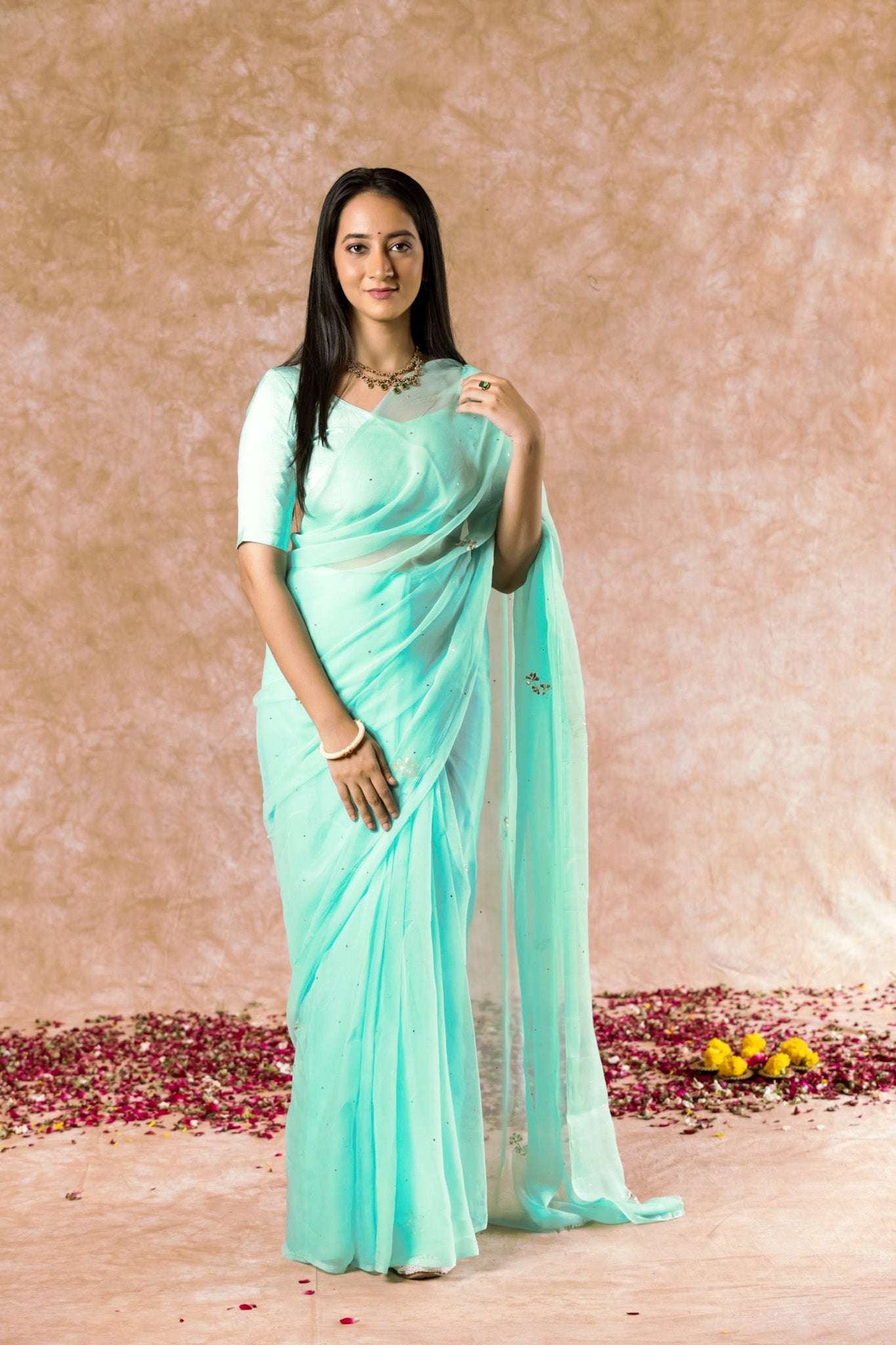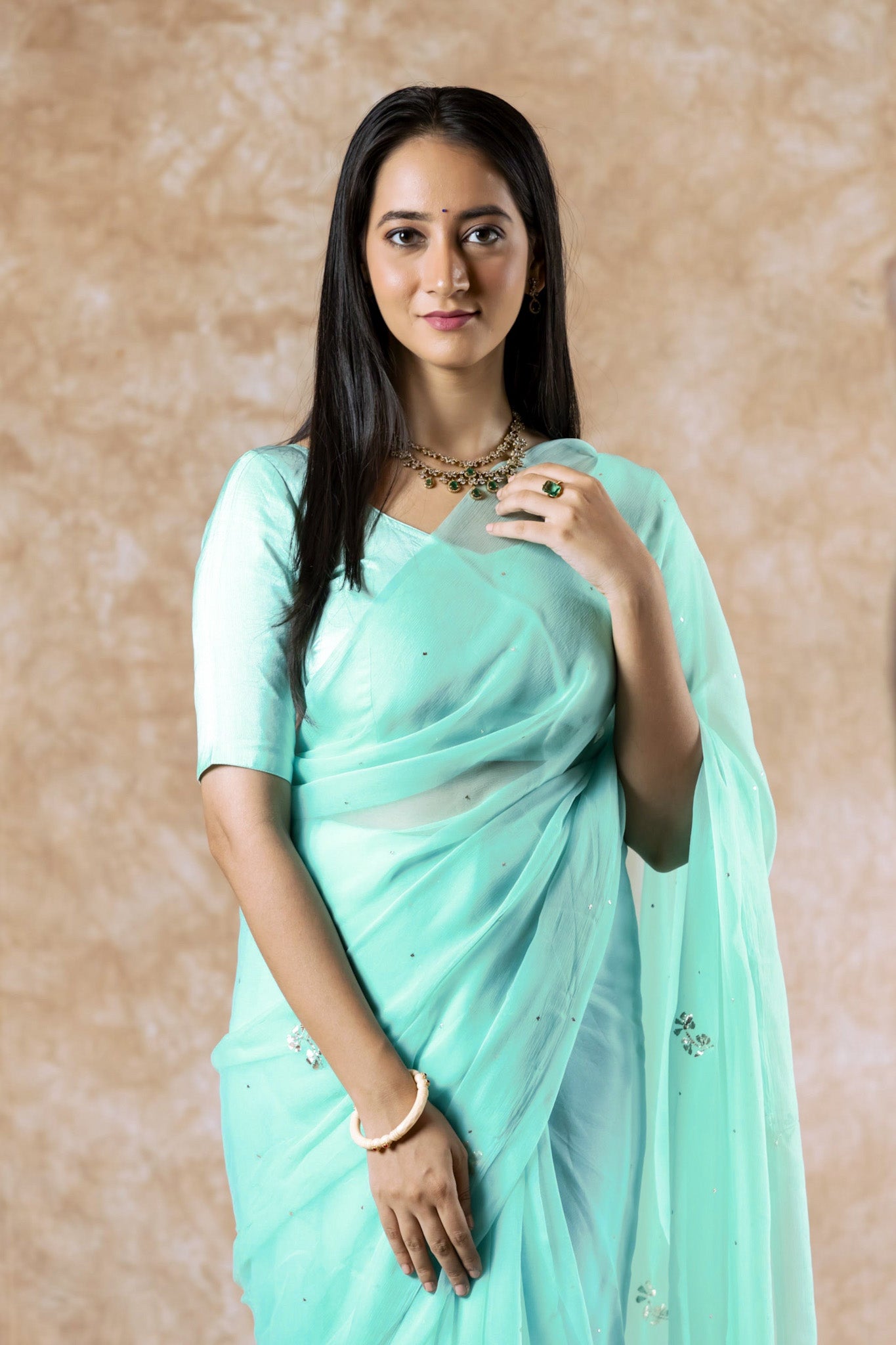Mukaish Hand Embroidery Sarees
Mukaish embroidery is a traditional and intricate textile art form known for its dazzling, metallic embellishments and exquisite craftsmanship. Originating from the Indian subcontinent, this embroidery technique is renowned for its elegance and is often used to adorn luxurious fabrics like sarees, lehengas, and dupattas. Here’s a detailed look at how Mukaish embroidery is done and what makes it unique:
How Mukaish Embroidery is Done:
-
Fabric Preparation: The process begins with selecting high-quality fabrics, such as silk, satin, or chiffon, which are pre-washed and prepared for embroidery. The fabric is often chosen for its smooth texture and sheen, which complements the metallic threads.
-
Design Planning: Artisans create or choose intricate designs, often featuring traditional motifs like floral patterns, geometric shapes, or paisleys. These designs are carefully planned to ensure they will highlight the embroidery’s beauty and complement the fabric.
-
Mukaish Thread Preparation: Mukaish embroidery uses fine metallic threads, typically made from silver, gold, or copper. These threads are prepared by twisting and flattening them into thin strips or threads suitable for embroidery.
-
Design Tracing: The chosen design is traced onto the fabric using a chalk or water-soluble pen. This provides a guide for the artisans to follow while stitching.
-
Embroidery Process: Skilled artisans use a needle to embroider the metallic threads onto the fabric. The threads are stitched in a variety of techniques, including surface embroidery, chain stitches, and beadwork, to create a textured and shimmering effect. The threads are often stitched in a way that creates a raised, three-dimensional appearance.
-
Adding Embellishments: Additional embellishments, such as beads, sequins, and mirrors, are often incorporated into the design. These elements enhance the embroidery’s sparkle and create a more elaborate and opulent look.
-
Finishing Touches: After the embroidery is complete, the fabric is carefully checked for any loose threads or imperfections. The embroidered garment is then cleaned and pressed to ensure a smooth, polished finish.
What Makes Mukaish Embroidery Unique:
-
Metallic Threads: The use of fine metallic threads distinguishes Mukaish embroidery from other embroidery techniques. These threads add a luxurious, shimmering quality to the fabric, making it ideal for special occasions and formal wear.
-
Intricate Craftsmanship: Mukaish embroidery is known for its meticulous and detailed work. The craftsmanship involved requires precision and skill, resulting in beautifully detailed designs that are both elegant and timeless.
-
Traditional Techniques: Mukaish embroidery has deep cultural roots and is traditionally associated with Indian royal and ceremonial attire. The technique has been passed down through generations, preserving its authenticity and cultural significance.
-
Versatility: Mukaish embroidery can be applied to a variety of fabrics and garments, including sarees, lehengas, dupattas, and even accessories. Its versatility makes it a popular choice for adding a touch of opulence to different types of clothing.
-
Three-Dimensional Effect: The way Mukaish threads are stitched creates a textured, three-dimensional effect on the fabric. This adds depth and visual interest to the embroidery, making it stand out and catch the light beautifully.
Mukaish embroidery is a cherished art form that combines traditional techniques with luxurious metallic threads, resulting in stunning, elegant designs. Its unique craftsmanship and cultural heritage make it a standout choice for creating exquisite and timeless textiles.






